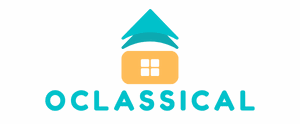In a world where pajamas have become the new business casual, remote work is here to stay. The freedom to work from anywhere—be it the comfort of a cozy couch or a bustling coffee shop—sounds like a dream come true. But without a solid game plan, that dream can quickly turn into a chaotic nightmare of missed deadlines and endless distractions.
Table of Contents
ToggleUnderstanding Remote Work
Remote work has transformed how many professionals approach their jobs, offering flexibility and comfort. Adapting to this new work style requires understanding both its advantages and potential hurdles.
Benefits of Remote Work
Flexibility stands out as a primary benefit, allowing employees to work from anywhere. Increased productivity often follows, as many find fewer office distractions enhance their focus. Cost savings play a significant role, with employees reducing expenses on commuting and professional attire. Access to a broader talent pool allows companies to hire the best candidates without geographical limitations. Improved work-life balance enhances employee satisfaction and retention.
Challenges of Remote Work
Isolation frequently arises when employees work remotely, leading to a sense of disconnection from colleagues. Distractions can distract focus, particularly in home environments with numerous potential interruptions. Communication gaps may result from relying on digital tools, leading to misunderstandings. Time management becomes critical, as the absence of structure can cause missed deadlines. Finally, maintaining motivation can prove difficult when working alone without the energy of a traditional office setting.
Setting Up Your Home Office

A well-organized home office enhances productivity and focus. Optimizing this space is crucial for remote workers aiming to maintain efficiency.
Choosing the Right Space
Selecting an ideal location significantly influences work performance. Opt for a quiet area with minimal distractions to create an effective workspace. Natural light improves mood and energy levels; consider positioning the desk near a window. Privacy is also essential; a separate room or a designated corner can help establish boundaries between work and leisure. Ensure the chosen space has adequate ventilation to maintain comfort throughout the day.
Essential Equipment and Tools
Investing in quality equipment boosts work efficiency. A comfortable ergonomic chair supports posture, while a sturdy desk accommodates necessary tools and documents. High-speed internet access ensures seamless connectivity for video calls and collaboration. Additionally, a reliable computer, whether a laptop or desktop, is crucial for running software applications needed for daily tasks. Noise-canceling headphones help minimize distractions, allowing workers to concentrate on assignments. Lastly, organizing tools like a printer, scanner, and adequate storage solutions streamline workflow.
Communication Strategies
Effective communication keeps remote teams connected and productive. Establishing clear methods enhances collaboration and ensures everyone stays aligned.
Effective Virtual Meetings
Set a clear agenda before each meeting to focus discussions. Encourage participation by asking team members to share updates and insights. Begin with essential topics followed by open discussions for questions. Use video to strengthen connections and enhance engagement. Ensure meetings start and end on time to respect everyone’s schedule. Share meeting notes afterward to recap key points and action items, reinforcing accountability.
Utilizing Collaboration Tools
Leverage tools like Slack or Microsoft Teams for real-time communication. Organize channels based on projects or departments to streamline conversations. Use document-sharing platforms like Google Drive for easy access and version control. Create structure in projects using tools such as Trello or Asana. Regular updates in these platforms keep everyone informed and engaged. Encourage feedback through these tools to foster a culture of collaboration and improvement.
Time Management Techniques
Effective time management enhances productivity and focus while working remotely. Implementing structured techniques can streamline daily tasks.
Creating a Daily Schedule
Establishing a daily schedule provides a clear roadmap. Allocate specific time blocks for each task to create a sense of accountability. Break larger projects into manageable segments, tackling them during peak energy periods. Use digital calendars or planners for easy tracking and adjustment. Regularly review progress and adjust priorities as necessary to stay on target.
Avoiding Distractions
Minimizing distractions ensures sustained focus throughout the workday. Identify common sources of interruptions, such as mobile notifications or background noise. Designate clear working hours to set boundaries with family or roommates. Utilize tools like website blockers to limit access to distracting sites during work periods. Creating a dedicated workspace encourages a professional mindset and reinforces commitment to assigned tasks.
Maintaining Work-Life Balance
Maintaining a healthy work-life balance plays a vital role in remote work success. It helps prevent burnout and boosts overall productivity.
Setting Boundaries
Establishing clear boundaries is essential for effective remote work. Workers must define their working hours and communicate these to family and friends. Respecting personal time is crucial, as it prevents work from encroaching on leisure. Notably, some professionals benefit from using “do not disturb” features on communication apps to minimize interruptions. Additionally, allocating a specific workspace reinforces this separation, helping individuals shift into a focused mindset during working hours. Cultivating this boundary encourages a clear distinction between work and personal life.
Taking Breaks Effectively
Prioritizing regular breaks enhances productivity and mental clarity. Effective breaks involve stepping away from the workspace to recharge fully. For instance, taking a 5-10 minute pause every hour can lead to increased focus when returning to tasks. Some individuals find that incorporating physical movement, such as stretching or a short walk, refreshes their mind and body. Engaging in activities that promote relaxation, like meditation or listening to music, can also provide significant benefits. Emphasizing these breaks fosters both well-being and sustained efficiency throughout the workday.
Embracing remote work offers numerous advantages but requires a thoughtful approach to truly thrive. By establishing a dedicated workspace and implementing effective communication strategies, individuals can navigate the challenges of isolation and distractions. Prioritizing time management techniques and maintaining a healthy work-life balance are essential for enhancing productivity and preventing burnout.
As remote work continues to evolve, adopting these best practices will empower professionals to maximize their potential while enjoying the flexibility that comes with this modern work style. With the right mindset and tools, remote workers can create a fulfilling and efficient work environment that meets their needs and fosters success.



